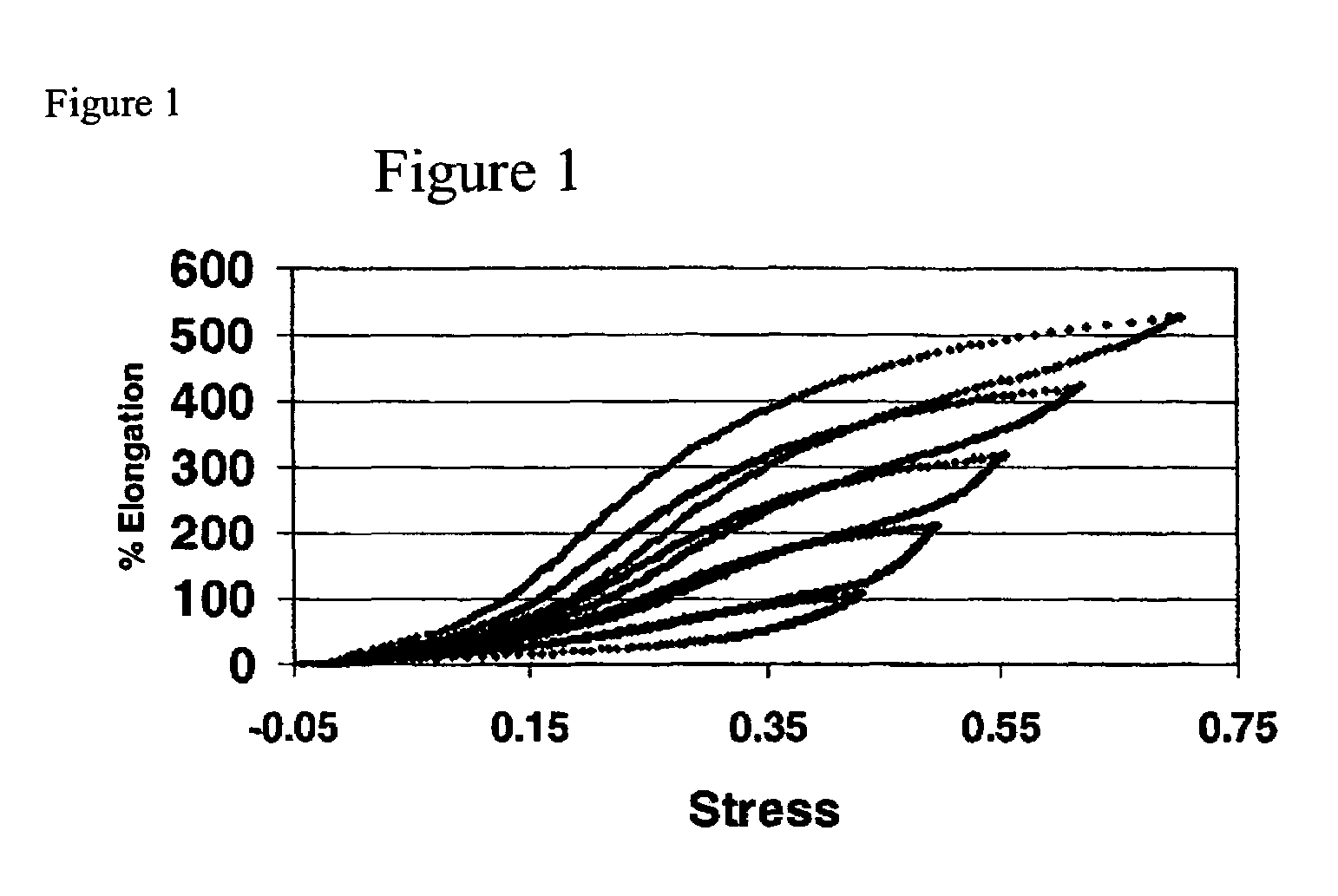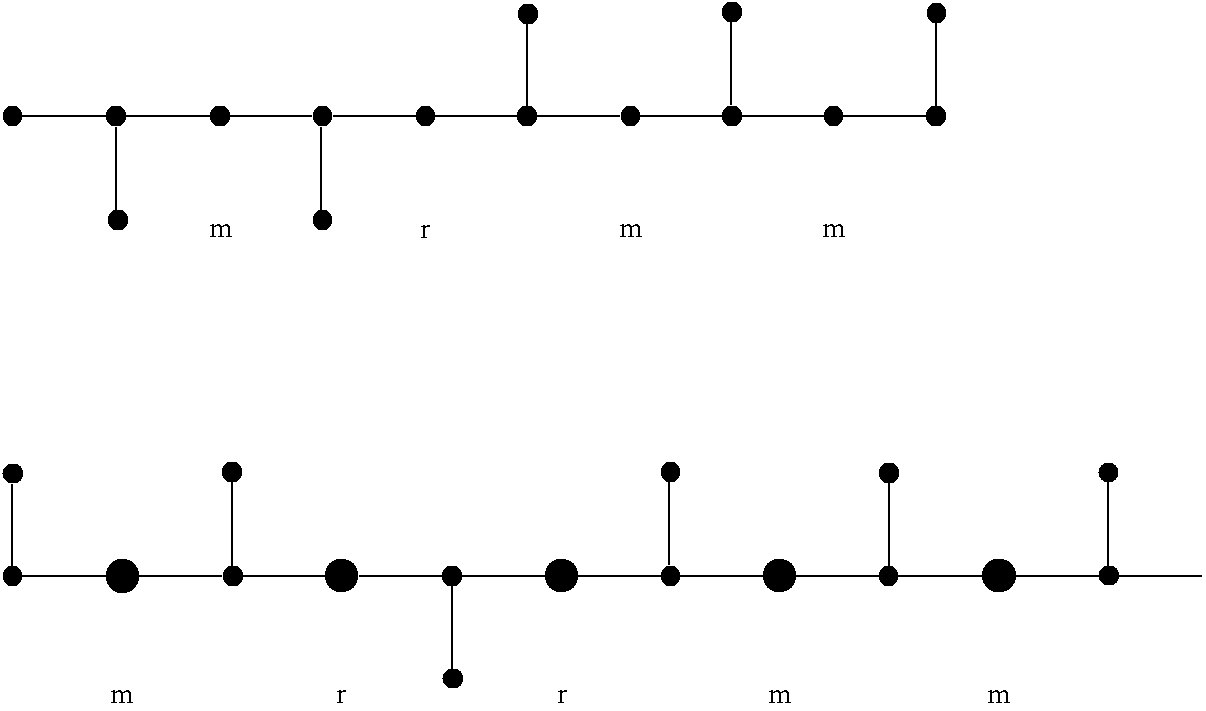Syndiotactic propylene elastomers
a technology of propylene and syndiotactic elastomers, applied in the field of elastic polyolefin, can solve the problems of low yield of collette, lack of elastic character of materials, and inability to elasticiz
- Summary
- Abstract
- Description
- Claims
- Application Information
AI Technical Summary
Problems solved by technology
Method used
Image
Examples
examples
Characterization and Tests
[0391]Molecular weights (number average molecular weight (Mn), weight average molecular weight (Mw), and z-average molecular weight (Mz)) were determined using size exclusion chromatography (SEC), with a differential refractive index detector (DRI), an online low angle light scattering (LALLS) detector and a viscometer (VIS). The details of the detector calibrations are described in T. Sun, P. Brant, R. R. Chance, and W. W. Graessley, Macromolecules, Volume 34, Number 19, 6812-6820, (2001);
[0392]The molecular weight distribution (MWD) is defined for use herein as MWD=(Mw / Mn). The g′ index was measured using SEC with an on-line viscometer (SEC-VIS) and is reported as g′ at each molecular weight. The g′ index is defined as:
[0393]g′=ηsηl
[0394]where ηs is the intrinsic viscosity of the sample polymer and ηl is the intrinsic viscosity of a linear polymer of the same viscosity-averaged molecular weight (Mv) as the sample polymer. ηl=KMvα, K and α were measured va...
PUM
| Property | Measurement | Unit |
|---|---|---|
| melting point temperature | aaaaa | aaaaa |
| molecular weight distribution | aaaaa | aaaaa |
| Tg | aaaaa | aaaaa |
Abstract
Description
Claims
Application Information
 Login to view more
Login to view more - R&D Engineer
- R&D Manager
- IP Professional
- Industry Leading Data Capabilities
- Powerful AI technology
- Patent DNA Extraction
Browse by: Latest US Patents, China's latest patents, Technical Efficacy Thesaurus, Application Domain, Technology Topic.
© 2024 PatSnap. All rights reserved.Legal|Privacy policy|Modern Slavery Act Transparency Statement|Sitemap



